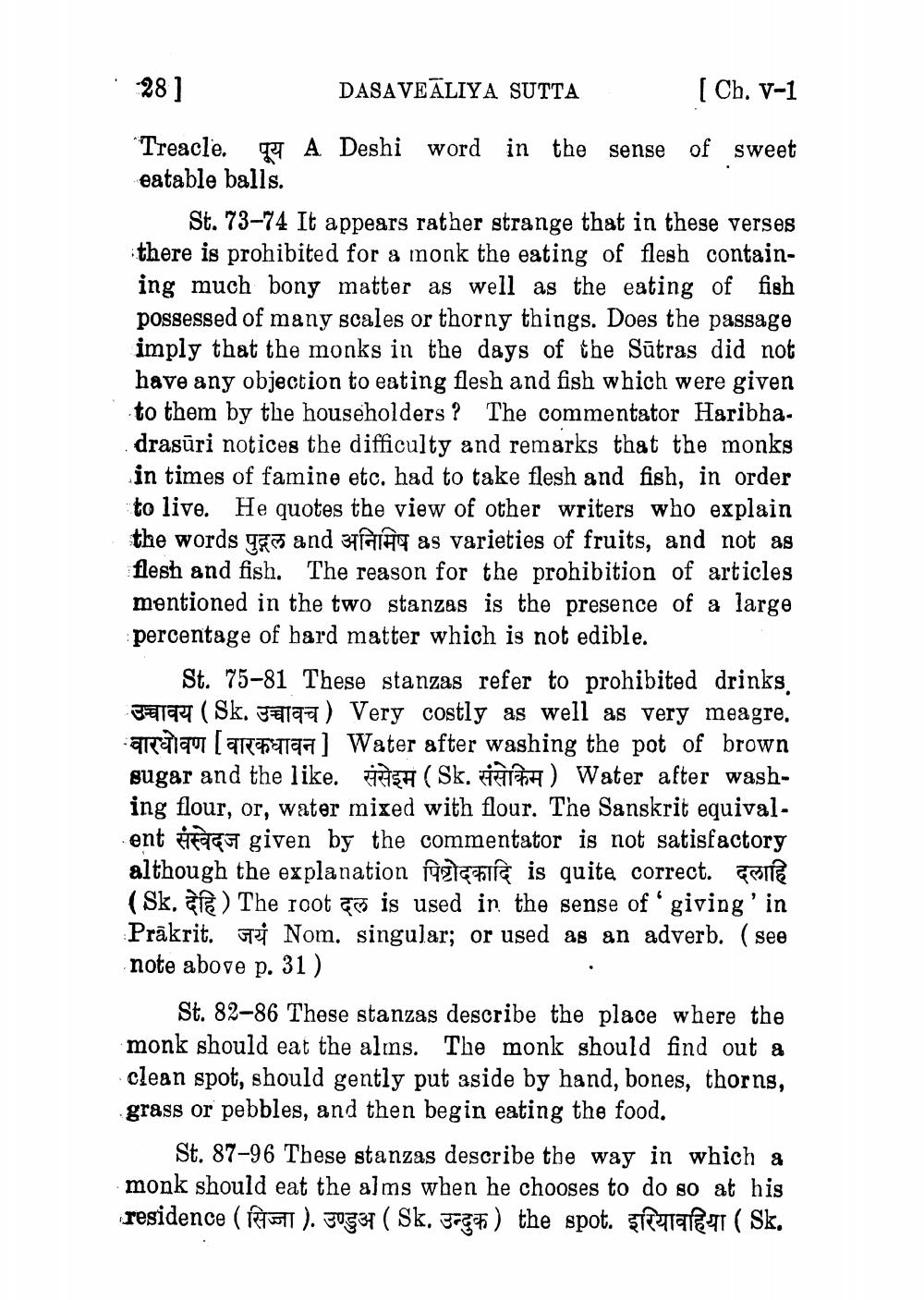________________
28]
DASAVEĀLIYA SUTTA
[ Ch. V-1
"Treacle. Ce A Deshi word in the sense of sweet eatable balls.
St. 73-74 It appears rather strange that in these verses there is prohibited for a monk the eating of flesh containing much bony matter as well as the eating of fish possessed of many scales or thorny things. Does the passage imply that the monks in the days of the Sūtras did not have any objection to eating flesh and fish which were given to them by the householders? The commentator Haribha. drasūri notices the difficulty and remarks that the monks in times of famine etc. had to take flesh and fish, in order to live. He quotes the view of other writers who explain the words ges and 3TGIT as varieties of fruits, and not as flesh and fish. The reason for the prohibition of articles mentioned in the two stanzas is the presence of a large percentage of hard matter which is not edible.
St. 75–81 These stanzas refer to prohibited drinks, उच्चावय (Sk. उच्चावच ) Very costly as well as very meagre. arcaiqui (ariaWater after washing the pot of brown sugar and the like. संसेइम (Sk. संसकिम) Water after washing flour, or, water mixed with flour. The Sanskrit equivalent #tags given by the commentator is not satisfactory although the explanation पिष्टोदकादि is quite correct. दलाहि (Sk. a) The root zo is used in the sense of giving'in Prākrit. Fri Nom. singular; or used as an adverb. (see note above p. 31 )
St. 82-86 These stanzas describe the place where the monk should eat the alms. The monk should find out a clean spot, should gently put aside by hand, bones, thorns, grass or pebbles, and then begin eating the food.
St. 87-96 These stanzas describe the way in which & monk should eat the alms when he chooses to do so at his residence (सिज्जा ). उण्डुअ ( Sk. उन्दुक) the spot. इरियावहिया ( Sk.




